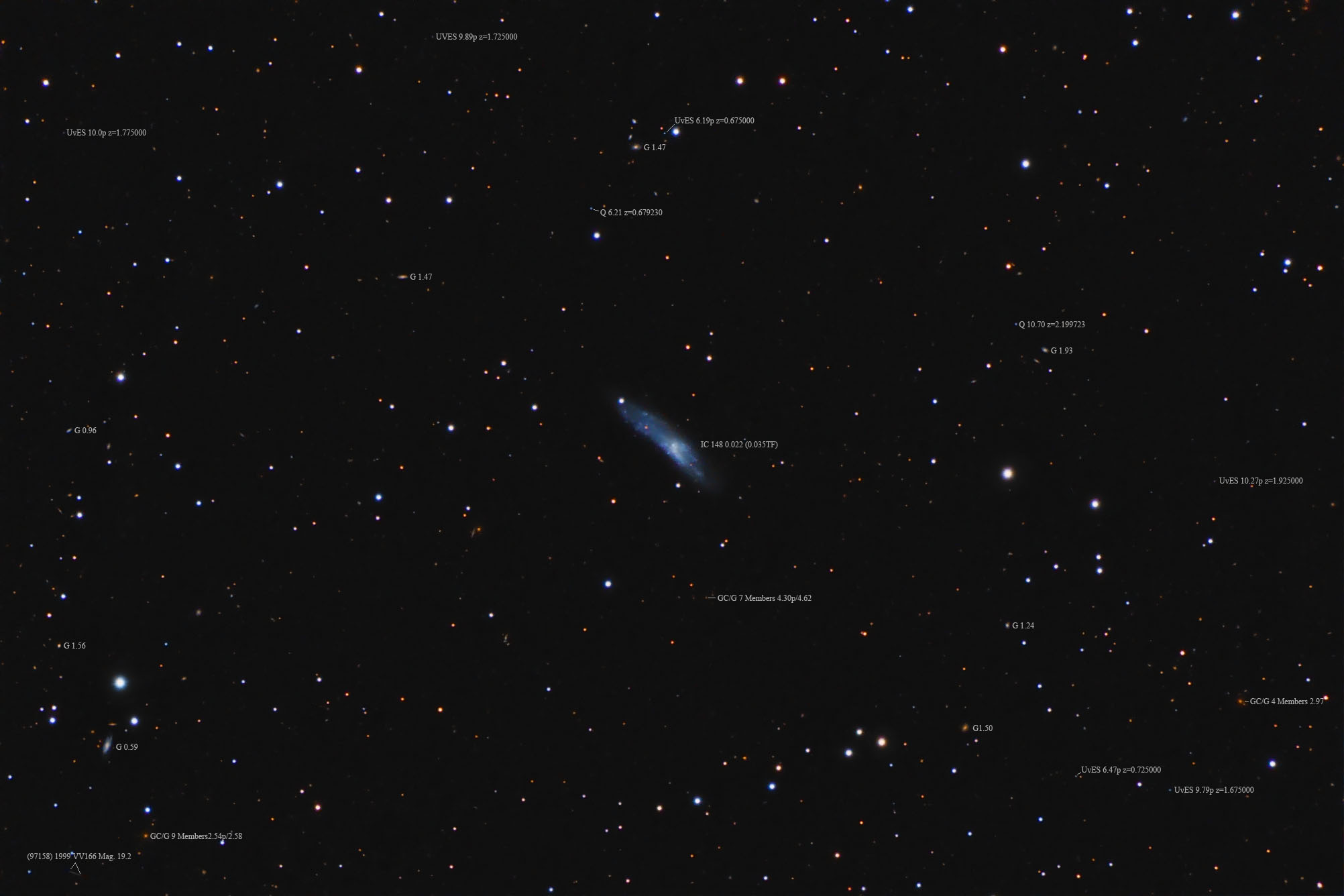| Description | Images |
Object name: IC0148 PGC6292Designation(s): IC0148_PGC6292, NGC0660, IC 148 is a rather small blue, warped, disk galaxy in Pisces only 22 minutes of arc from the far more famous polar ring galaxy NGC 660. Just too far for me to put them in the same FOV. They do have similar redshift so are likely related and maybe even interacting. It may be the cause of the warping of this galaxy. The distance to it is rather uncertain. Even APOD won't try to pin that down for NGC 660 saying only that it is over 20 million light-years from us. Redshift puts IC 148 at 22 million light-years while a single Tully Fisher estimate says 35 million light-years. I tend to favor the larger value mainly due to its angular size. If the 22 million light-year figure is used the galaxy is only 22,400 light-years across. That seems small to me. The larger distance makes it 35,600 light-years across, a more reasonable size. If its angular separation from NGC 660 is a good indicator of their real separation, that is they really are at the same distance from us, then they are only 139,000 light-years to 221,000 light-years apart. That's quite close. This, of course, is the minimum distance between them, the actual distance could be much greater since neither has a good distance estimate. Related Designation(s):1WGA J0143.0+1338, 1XMM J014302.3+133845, 2MASX J01430234+1338444, 2MASXi J0143014+133838, 2MFGC 01291, 2XMM J014302.3+133845, 2XMMp J014302.3+133846, 87GB 014023.6+132345, 87GB[BWE91] 0140+1323, AKARI J0143024+133845, ASK 043063.0, CGCG 0140.3+1323, CGCG 437-012, CXO J014302.3+133843, CXO J014302.37+133844.1, GALEXMSC J014302.36+133843.6 , HIPASS J0143+13, IC0148 PGC6292, IRAS 01403+1323, IRAS F01403+1323, LGG 029:[G93] 002, LQAC 025+013 019, MCG +02-05-013, MG1 J014303+1338, MRC 0140+133, NGC 0660, NGC 0660:[L2011a] X0001, NGC0660, NSA 130241, NVSS J014302+133845, PGC 006318, PRC C-13, SDSS J014302.39+133842.2, SDSS J014302.40+133842.2, SDSS J014302.41+133842.1, TXS 0140+133, UGC 01201, USGC U071 NED02, UZC J014301.7+133834, VLSS J0143.0+1338, [dML87] 588, [M98j] 024 NED03, [RHM2006] SFGs 123, [VCV2001] J014301.8+133830, [VCV2006] J014301.8+133830, [VCV2006] J014302.5+133842, [WB92] 0140+1323 NED01, | Permanent link: https://images.mantrapskies.com/catalog/OTHER/IC0148_PGC6292-NGC0660/IC148L4X10RGB2X10.JPG Permanent link: https://images.mantrapskies.com/catalog/OTHER/IC0148_PGC6292-NGC0660/IC148L4X10RGB2X10CROP150.JPG |



